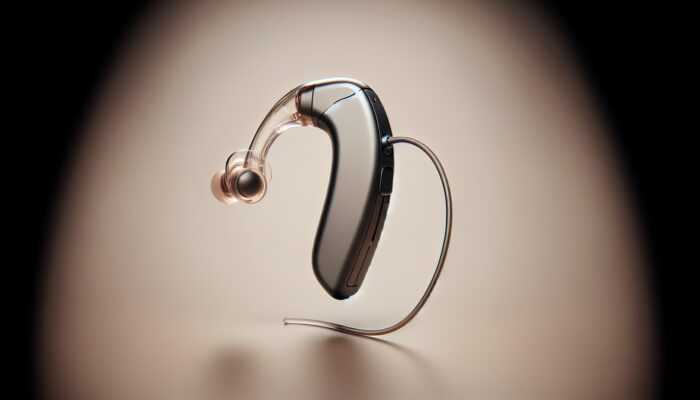Last Updated on 26/05/2025 by Admin
Embarking on the Transformative Journey of Hearing Aid Adjustment
Embracing hearing aids can fundamentally change one’s auditory experience, yet this journey is often fraught with hurdles. The significance of patience during the hearing aid adjustment process becomes especially clear as newcomers navigate an essential phase of acclimatisation. This period signifies more than just getting used to a device; it embodies a profound transformation in how sounds are perceived and integrated into daily life. Gaining a deeper understanding of this journey not only cultivates empathy but also raises awareness, leading to a smoother transition for all involved, from users to their support networks.
Strategies for Overcoming Initial Discomfort Associated with Hearing Aids
When first donning hearing aids, many users describe experiencing discomfort. This sensation can manifest as a feeling of fullness in the ear or irritation caused by the device itself. Such feelings are entirely normal, albeit disheartening for those new to hearing aids. It is crucial for individuals to recognise that this initial discomfort is temporary. Embracing patience is vital as the body gradually adjusts to the hearing aids, allowing for a natural desensitisation process to unfold. Understanding that discomfort is a common part of this journey can empower users to persist and adapt.
While some users may interpret discomfort as an indication that the hearing aids are unsuitable, it is important to acknowledge that the majority of individuals adapt over time. Many liken this experience to breaking in a new pair of shoes—initially tight and uncomfortable, yet eventually becoming a source of comfort and support. Early discussions with audiologists about any discomfort can result in necessary modifications that make the transition easier. This proactive approach ensures that users can cultivate patience, ultimately leading to a better fit and a more enjoyable experience with their hearing aids.
Learning to Adapt to Enhanced Sound Quality with Hearing Aids
Once hearing aids are fitted, users encounter a significantly altered auditory landscape. They may find themselves surrounded by sounds that previously went unnoticed, which can be overwhelming as everyday noises become amplified. This amplification can lead to feelings of fatigue and anxiety, as users must recalibrate their auditory expectations and learn to navigate this new soundscape. Thus, allowing oneself ample time to adjust is of utmost importance.
During this adjustment period, adopting a patient mindset is essential. Gradually, sounds that once felt overwhelming will start to blend into familiar background noise. This process can be compared to learning to appreciate a new musical instrument: initially dissonant, yet with practice, it evolves into a source of joy and enrichment. By granting oneself the grace of time, users can shift from feelings of being overwhelmed to an appreciation for the clarity that hearing aids bring, thus enhancing their overall auditory experience.
Experiencing Steady Improvement with the Usage of Hearing Aids
The journey with hearing aids is marked by gradual improvement. Users often undergo a learning curve, with their auditory perception becoming clearer and more nuanced over time. This transformation requires patience, as the brain adapts to processing sounds in a new way. Instead of aiming for immediate perfection, focusing on small progressions can foster a greater sense of achievement and satisfaction throughout the adjustment period.
Daily engagement is crucial for helping users acclimatise to their devices. Participating in conversations, listening to music, or simply enjoying the sounds of nature can significantly expedite this adaptation process, allowing individuals to fully benefit from clearer hearing. The gradual enhancement of sound clarity fosters a deeper connection to the world around them, reinforcing the idea that patience is indeed a virtue on this auditory journey towards improved hearing.
Effectively Integrating Hearing Aids into Everyday Life
Incorporating hearing aids into daily routines requires considerable adjustment. Users must establish practices for managing and maintaining their devices, including tasks such as cleaning and changing batteries. Although this integration may initially feel daunting, it is a vital step towards maximising the benefits that hearing aids provide in everyday life.
By developing a consistent routine, users can demystify the process, transforming it from a chore into a comfortable habit. For example, creating a dedicated space for hearing aid maintenance and setting reminders for routine tasks can facilitate a smoother transition, ensuring that the devices function optimally. Such practical strategies enhance the overall user experience, underscoring the critical role of patience in establishing these new habits and routines.
Becoming Acquainted with Hearing Aid Technology
Navigating the realm of new technology can pose a formidable challenge, particularly when it comes to enhancing one’s hearing capabilities. The importance of patience in mastering hearing aid technologies is especially pronounced, as users must acclimatise to a variety of features designed to optimise their auditory experience. Understanding these technologies may take time, but the benefits of doing so are substantial.
Mastering Hearing Aid Features for Enhanced Listening Experiences
Modern hearing aids come equipped with a myriad of features, such as noise cancellation and Bluetooth connectivity. For many users, mastering these functionalities can initially seem overwhelming. It requires genuine patience and a willingness to engage with the technology. Fortunately, numerous audiologists and manufacturers provide extensive resources and support to guide users through the learning process, helping them become proficient with their devices.
As users become familiar with the various features of their hearing aids, they may discover personalised settings that dramatically enhance their listening experience. This journey often involves a process of trial and error, during which users learn which settings perform best in different environments—be it a bustling café or a serene living room. With persistence and a curious mindset, users can unlock the full potential of their hearing aids, demonstrating that patience can lead to empowerment and improved auditory capabilities.
Recognising the Necessity for Customisation of Hearing Aids
To achieve peak performance from hearing aids, customisation is often essential. Each individual’s hearing loss is unique, necessitating personalised settings tailored to address specific needs and preferences. This customisation process can be time-consuming, as users experiment with various adjustments to discover their ideal auditory profile.
The patience exhibited by users during this phase is crucial for success. Audiologists typically recommend making gradual adjustments rather than abrupt changes, allowing users to adapt comfortably over time. This process might involve tweaking settings over multiple appointments or testing different programmes tailored for specific environments. As users invest time and effort into customisation, they often find that personalised settings unlock unparalleled clarity, reinforcing the vital connection between patience and effective hearing aid use.
Addressing and Troubleshooting Technical Issues with Hearing Aids
Inevitably, technical issues may arise with hearing aids, ranging from connectivity problems to sound distortion. Addressing these challenges requires not only technical knowledge but also a substantial amount of patience. Users should prepare to troubleshoot confidently, often seeking guidance from professionals or engaging with community forums for support.
As users become more knowledgeable about their devices, they often find that troubleshooting becomes simpler and more intuitive over time. Engaging with others who share similar experiences can provide valuable insights and support. Whether through online communities or local support groups, the exchange of tips and solutions enhances the overall experience, illustrating how patience can cultivate a sense of community and shared learning among users.
Understanding the Emotional and Psychological Aspects of Hearing Aid Adaptation
The emotional journey associated with adapting to hearing aids is just as significant as the technical one. Recognising the emotional and psychological dimensions involved can illuminate the importance of patience in the hearing aid adaptation journey on a deeper level. This journey encompasses acceptance of hearing loss, building confidence, and managing expectations to foster a positive experience.
Embracing Acceptance of Hearing Loss and its Emotional Challenges
Coming to terms with hearing loss presents an emotional challenge that many users must confront. Acceptance is often a gradual process, requiring patience and support from loved ones. Individuals may grapple with feelings of frustration, loss, or even denial about their hearing condition. Acknowledging these emotions is vital for progressing towards a more fulfilling auditory experience.
Support systems, such as family and friends, play an integral role in helping users navigate this emotional landscape. Open conversations about hearing loss can strengthen bonds and provide the necessary encouragement to embrace change. As users find acceptance, they pave the way for a more positive experience with hearing aids, highlighting the importance of patience during this crucial phase of their journey.
Building Confidence in the Usage of Hearing Aids
Developing confidence in using hearing aids can take time and practice. Users might feel self-conscious in social settings, fearing judgement or misunderstanding from others. Cultivating this confidence requires patience, as individuals gradually acclimate to using their devices in various environments and situations.
Participating in social events, whether casual gatherings or formal occasions, can significantly boost confidence. Users often discover that, with practice, their awareness of sounds improves, allowing them to engage more fully in conversations. This gradual enhancement of social interactions illustrates how patience can translate into newfound confidence and fulfilment in everyday life, enriching the overall experience.
Setting and Managing Realistic Expectations During Adjustment
Establishing realistic expectations is crucial for anyone adjusting to hearing aids. Many users may anticipate immediate improvements in their hearing ability, only to discover that progress unfolds gradually over time. Cultivating a patient mindset enables users to embrace the journey rather than focusing solely on the end results.
Understanding that hearing aids are not a cure but rather a valuable tool for enhancing auditory experiences is essential. Users must remind themselves that adjustments take time and that setbacks are a natural part of the process. By managing expectations and celebrating incremental victories, users can maintain motivation and commitment to their auditory journey, fostering a positive outlook on their experience.
The Crucial Importance of Professional Guidance and Continuous Follow-Ups
The role of professionals in the hearing aid journey is undeniably significant. Regular consultations and ongoing support are essential to ensure users achieve the best outcomes possible. The need for patience in the context of professional guidance resonates strongly, as building a solid relationship with audiologists requires time and trust.
The Essential Nature of Regular Check-Ups with Audiologists
Consistent follow-up appointments are crucial for fine-tuning hearing aids to ensure optimal performance. Audiologists can assess the effectiveness of adjustments and recommend further changes based on user feedback and experiences. This collaborative process requires patience from both users and professionals, as fine-tuning is a joint effort.
During these visits, users have the opportunity to communicate their experiences, enabling audiologists to provide tailored recommendations that address specific needs. Regular check-ups foster a sense of partnership in the hearing journey, emphasising that patience can yield significant results and lead to an enhanced listening experience overall.
Recognising the Importance of Professional Adjustments
Audiologists often require multiple sessions to make necessary adjustments to hearing aids, which may sometimes feel like a slow process for users. It is essential for users to recognise that each adjustment is a critical step toward achieving optimal hearing. This phase demands patience, as users must trust the adjustments being made by professionals to ensure the best outcomes.
As adjustments are implemented, users may notice immediate improvements in their hearing, reinforcing the value of their patience throughout this journey. Hearing aids may undergo further fine-tuning to accommodate changes in hearing over time, showcasing how ongoing collaboration with professionals enhances the overall experience and effectiveness of the devices.
Receiving Continuous Support from Hearing Health Professionals
Ongoing support from hearing health professionals is vital for users as they navigate their auditory journey. This support can encompass education about device care, troubleshooting assistance, and encouragement throughout the adjustment process. Users must approach this guidance with patience, recognising that developing a supportive relationship with professionals takes time and trust.
Leveraging the expertise of audiologists empowers users to feel more confident and knowledgeable about their hearing aids. As this relationship deepens, users often find that their patience translates into enhanced support and a more satisfying experience with their devices, reinforcing the importance of ongoing professional guidance in the adjustment process.
Committing to Continuous Education About Advancements in Hearing Technology
The landscape of hearing aids is continuously evolving, with new technologies and techniques emerging regularly. Staying informed requires dedication and patience, as users navigate their way through learning about advancements in hearing technology. Engaging in ongoing education can significantly enhance the user’s overall experience and satisfaction with their devices.
Participating in workshops, webinars, or community discussions can provide valuable insights into the latest technologies and innovations in hearing aids. By remaining open to learning, users can adapt to changes in the field, ensuring they make the most of their hearing aids and the opportunities they provide. Patience in education ultimately fosters a deeper understanding and connection to the world of sound and improved auditory health.
Enhancing Social Integration and Communication Skills Through Patience
The journey toward effective communication and social integration is a significant aspect of adapting to hearing aids. The importance of patience in improving communication becomes evident as users work diligently to strengthen their connections with others, reintegrate into social settings, and receive meaningful support from family and friends.
Refining Communication Skills Through Dedicated Practice
Communication is a vital component of human interaction, and adapting to hearing aids can significantly enhance this experience. However, mastering effective communication necessitates patience and practice. Users often need to relearn how to engage in conversations, taking the necessary time to adjust to the nuances of sound and speech.
To improve communication, users should practice active listening techniques, such as maintaining eye contact and minimising distractions during conversations. Engaging in discussions in varied environments will help users become more adept at navigating different soundscapes. This gradual improvement underscores the importance of patience as users refine their communication skills and build confidence in their auditory capabilities.
Reintegrating into Social Settings with Enhanced Confidence
Reintegrating into social settings can be daunting for those adjusting to hearing aids. Users may feel apprehensive about how to navigate conversations or react to background noise in social situations. This reintegration process requires patience, as individuals gradually build comfort and confidence in various social environments.
Support from peers, family, and friends plays a crucial role during this adjustment phase. Encouragement and understanding from loved ones can help users feel more at ease during interactions. Attending social events with trusted companions can provide a safety net, allowing users to focus on enjoying the experience while adapting to their hearing aids, fostering positive social interactions.
The Essential Role of Family and Friends in the Hearing Aid Journey
The involvement of family and friends is pivotal in the hearing aid journey. Their understanding and patience can significantly enhance the user experience. Establishing open lines of communication about hearing needs and challenges fosters a supportive environment, enabling users to feel more comfortable expressing their concerns and needs.
Creating a supportive atmosphere encourages users to practice their listening and communication skills. Family members can actively participate in this journey by learning to speak clearly, minimising background noise, and allowing ample time for responses during conversations. Such support not only aids in the user’s adjustment but also strengthens relationships, illustrating the profound impact of patience and empathy in the journey towards improved hearing.
Connecting with Community Resources for Enhanced Support
Engaging with community groups can provide vital resources for those adapting to hearing aids. These groups offer support and practice opportunities, allowing users to connect with others facing similar challenges. This engagement requires patience, as building friendships and bonds takes time and effort.
Participating in community events offers a safe space for users to practice their communication skills in a supportive environment. Activities such as group discussions or workshops can foster a sense of belonging and camaraderie, ultimately enhancing the social experience. By immersing themselves in supportive communities, users can navigate their journeys with renewed confidence and a sense of connection with others.
Realising Long-Term Benefits Through Commitment and Patience
The long-term benefits of using hearing aids are substantial, but achieving these advantages necessitates sustained commitment and patience. Recognising the <a href="https://www.earwaxremoval.net/hearing-aids-explained-how-they-work-and-their-benefits/">importance of patience in the journey to auditory health</a> becomes essential as users embark on a fulfilling path towards enhanced hearing and improved quality of life.
Establishing Consistency in Hearing Aid Usage for Optimal Benefits
Consistency in wearing hearing aids is critical for reaping long-term benefits. Users must develop the habit of wearing their devices regularly, which can take time and dedication. This commitment necessitates patience as individuals adjust to the routine of seamlessly integrating their hearing aids into daily life.
Research indicates that users who wear their hearing aids consistently experience greater satisfaction and improvement in communication skills. By fostering a routine around regular use, individuals unlock the full potential of their devices, illustrating how patience and dedication directly correlate with positive outcomes in hearing and overall well-being.
Embracing Continuous Improvement on the Hearing Journey
The journey with hearing aids is dynamic; it evolves over time as users adapt to their devices and learn more about their hearing needs. This ongoing progression requires patience, as users must remain engaged with their audiologists and be open to necessary adjustments and innovations that enhance their auditory experience.
As users develop a deeper understanding of their hearing needs, they may discover new ways to optimise their hearing aids for improved performance. This continuous journey emphasises that patience is a fundamental aspect of maximising the benefits of hearing technology, illustrating that the path to enhanced hearing is a marathon, not a sprint.
Transforming Lifestyle Through Enhanced Hearing Capabilities
Enhanced hearing can significantly elevate an individual’s overall quality of life. Users often find that by exercising patience and commitment, their auditory experiences transform, leading to improved relationships, greater participation in activities, and a more fulfilling lifestyle overall.
Fully engaging in life’s moments—whether relishing music, participating in conversations, or experiencing the sounds of nature—becomes more accessible with hearing aids. This lifestyle enhancement underscores the transformative power of patience, revealing that the journey toward better hearing is ultimately a journey toward a richer and more vibrant life filled with experiences and connections.
Frequently Asked Questions About Hearing Aids
What are the most common challenges when adjusting to hearing aids?
Many users encounter challenges such as discomfort, adapting to sound quality, and the need to establish new communication habits. These obstacles necessitate patience and persistence for successful adjustment and integration into daily life.
How long does it typically take to get used to hearing aids?
The adjustment period can vary significantly among individuals but generally spans several weeks to months, depending on the unique experiences of each user and the complexity of their hearing loss.
Can hearing aids improve my social life?
Absolutely! Many users find that enhanced hearing leads to improved communication, stronger relationships, and greater participation in a variety of social activities and settings.
What types of support can family and friends provide?
Family and friends can offer encouragement, assist in practising communication skills, and create an understanding environment that fosters comfort and confidence for the hearing aid user.
How often should I see my audiologist after getting hearing aids?
Regular follow-up appointments, typically every six months to a year, are recommended to ensure optimal fitting and to address any adjustments needed for your hearing aids based on user feedback and experiences.
What should I do if I experience discomfort with my hearing aids?
If discomfort persists, it is advisable to reach out to your audiologist for necessary adjustments. They can assist in ensuring that your hearing aids fit properly and are comfortable to wear, enhancing your overall experience.
How can I maintain my hearing aids effectively?
Regular cleaning, proper storage, and timely battery changes are essential for maintaining hearing aids. Following the manufacturer’s guidelines and recommended care practices can help ensure the longevity and performance of the devices.
What can I do to manage my expectations while adjusting?
Set realistic goals for your adjustment journey, focusing on small improvements and milestones. Remember that progress may be gradual, and celebrating achievements along the way can help maintain motivation and positivity.
Is it necessary to wear hearing aids all day?
While it is beneficial to wear hearing aids consistently for maximum results, users can gradually increase wear time as they become more comfortable with the device and its functionalities.
Are there resources available for learning more about hearing aids?
Yes! Many audiologists offer workshops, support groups, and online resources designed to educate users about their hearing aids and the adjustment process, empowering them with knowledge and skills to enhance their experience.
Explore our world on X!
The post Hearing Aids: A Universal Guide to Patience in Use appeared first on The Microsuction Ear Wax Removal Network.









